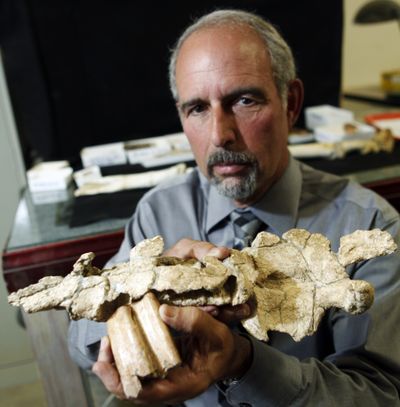Calif. construction site yielding fossil trove
Scientists have found more than 1,450 specimens

RIVERSIDE, Calif. – It happened more than a million years ago, but the fossilized evidence preserved the scene. A horse not much different from modern horses was enjoying a cool drink at a watering hole in what is now San Timoteo Canyon when a saber-toothed cat sneaked up and grabbed it by the haunch.
After finishing its meal, the cat left the skeleton to be buried in mud from flash floods. That cat, or one very like it, eventually also ended up dead and its skeleton joined the horse’s in the accumulating sediment.
And then, 1.4 million years later, Southern California Edison crews constructing a new substation for the growing population of Riverside County unearthed the horse – tooth marks still distinct on its leg – the cat and a trove of fossils.
Excavation at the site has so far revealed what may be California’s oldest example of the saber-toothed cat Smilodon gracilis, a specimen more than a million years older than the Smilodon fatalis from Los Angeles’ La Brea tar pits, which carry an array of fossils dating to as recently as 9,000 years ago.
Scientists so far have identified more than 1,450 specimens, including about 250 large vertebrate fossils and more than 1,220 rabbit-size or smaller.
“And we’re still counting,” said paleontologist Robert Reynolds of LSA Associates of Riverside, the consulting paleontologists who are handling the dig for utility company Southern California Edison.
Other specimens include llamas, horses and deer and more saber-toothed cats, some rare and others previously unknown. There is one of the earliest examples of a giant ground sloth and many of the fossils are in a remarkably well-preserved state, Reynolds said.
“I’ve been working in this area for more than 40 years and have never seen concentrations of fossils like this,” Reynolds said. So far, he said, the team has found more than 30 different species.
The fossils sharply increase the number of specimens available from what is known as the Irvingtonian North American Land Mammal Age, about 1.9 million years ago to 250,000 years ago.